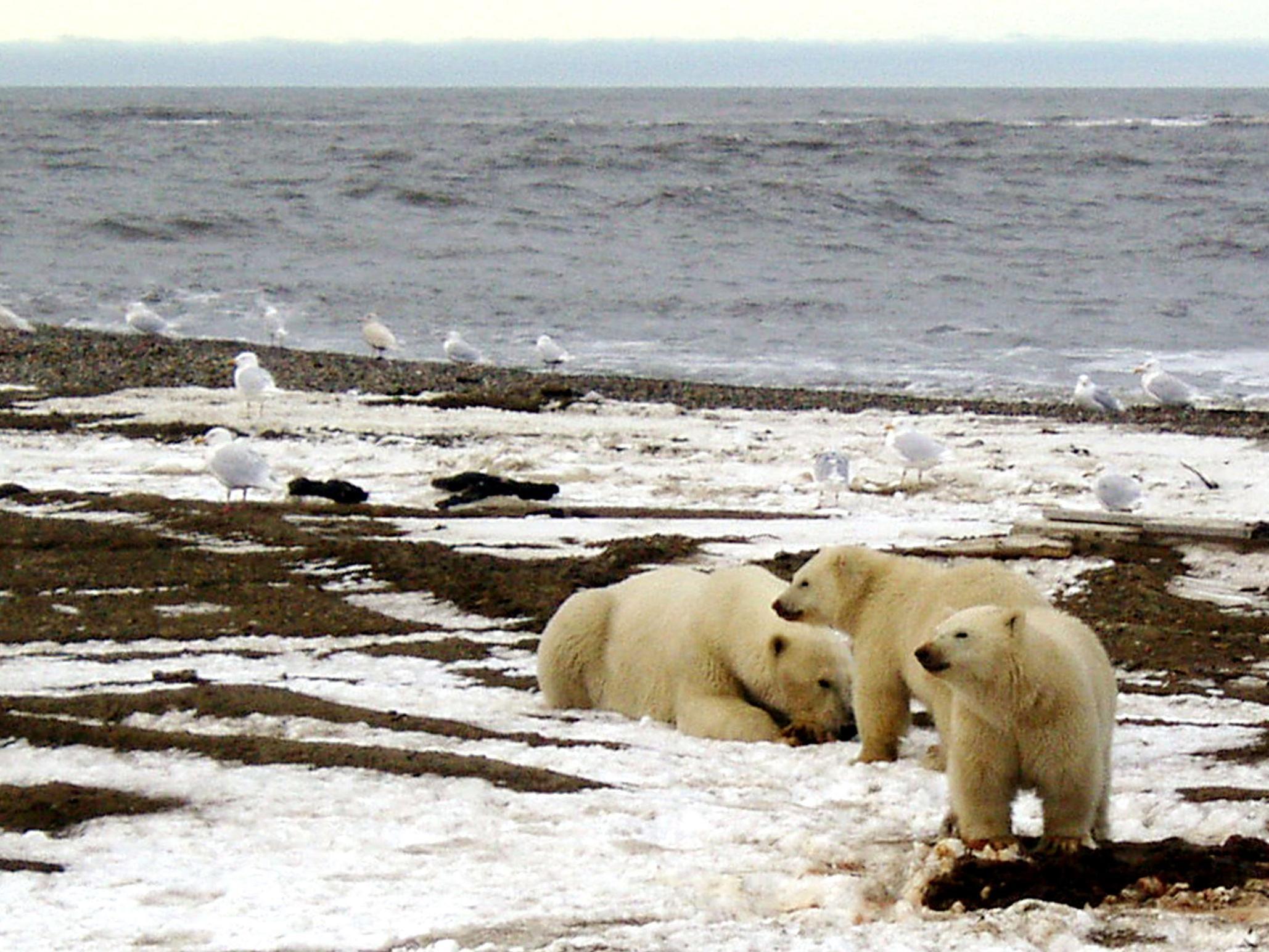A third of polar bears to be wiped out in 40 years because of melting sea ice, study finds
Polar bears are unable to live on the platforms of ice that they need to catch food

Your support helps us to tell the story
From reproductive rights to climate change to Big Tech, The Independent is on the ground when the story is developing. Whether it's investigating the financials of Elon Musk's pro-Trump PAC or producing our latest documentary, 'The A Word', which shines a light on the American women fighting for reproductive rights, we know how important it is to parse out the facts from the messaging.
At such a critical moment in US history, we need reporters on the ground. Your donation allows us to keep sending journalists to speak to both sides of the story.
The Independent is trusted by Americans across the entire political spectrum. And unlike many other quality news outlets, we choose not to lock Americans out of our reporting and analysis with paywalls. We believe quality journalism should be available to everyone, paid for by those who can afford it.
Your support makes all the difference.A third of all the world’s polar bears are likely to be dead in 40 years, according to a new study.
There is a 71 per cent likelihood that the polar bear population will be wiped out by at least 30 per cent in three more generations, at the research claims.
The massive reduction in the population would be the result of the increased threat of global warming. That is leading the polar sea ice to melt and leaving the bears without the platforms that they need to hunt and survive.
That’s likely to cut down the polar bear population from 26,000 to about 17,300 in the next 35 to 41 years.
The findings are consistent with polar bears being listed as "vulnerable" on the International Union for Conservation of Nature (IUCN) red list of threatened and endangered species.
Loss of sea ice due to climate change has a direct impact on the ability of polar bears to feed and survive.
The bears need platforms of ice to reach their prey of ringed and bearded seals. Some sea ice lies over more productive hunting areas than others.
Scientists have divided polar bears into 19 sub-populations, two of which have already experienced population declines due to shrinking sea ice.
Others have shown signs of "nutritional stress" or are currently said to be "stable" or "productive", according to the study authors.
The researchers combined polar bear generational length with sea ice projections based on satellite data and computer simulations.
They worked out the probability that reductions in the mean global population size of polar bears will be greater than 30%, 50% and 80% in the space of three generations.
While the likelihood of a more than 30% loss was high, there was little chance of populations crashing to near-extinction levels.
Writing in the Royal Society journal Biology Letters, the team, led by Dr Eric Regehr from the US Fish and Wildlife Service, concluded: "Our findings support the potential for large declines in polar bear numbers owing to sea ice loss."
Additional reporting by Press Association
Join our commenting forum
Join thought-provoking conversations, follow other Independent readers and see their replies
Comments